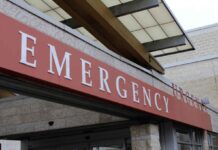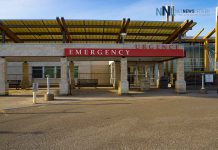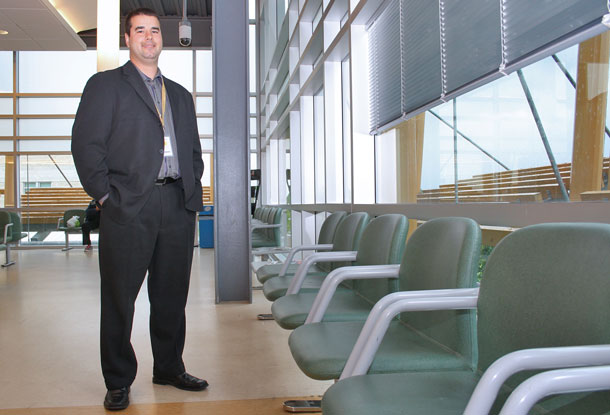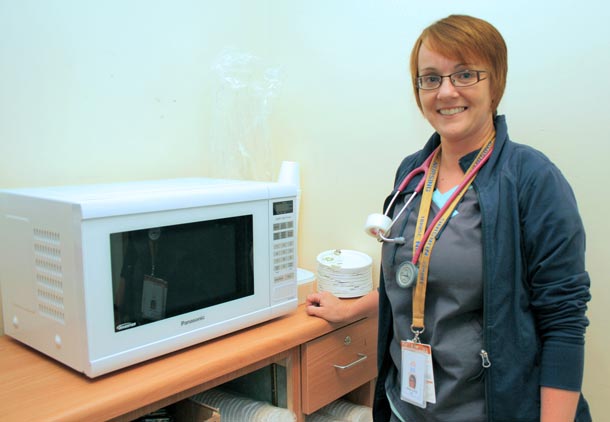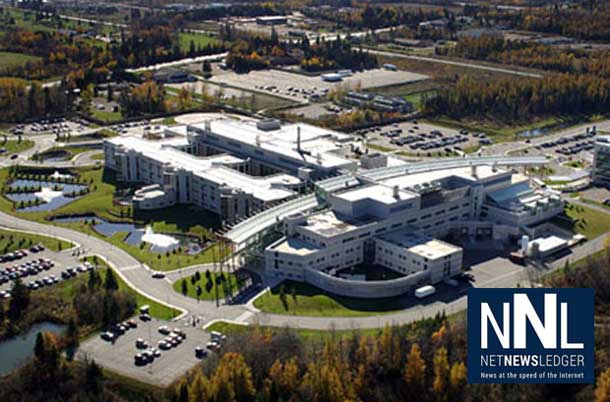
“On behalf of the Ministry of Health and Long-Term Care, we are pleased to recognize the outstanding Emergency Department performance that has been achieved at Thunder Bay Regional Health Sciences Centre. Your hospital has maintained the lowest 90th percentile for ED Length of Stay (LOS) within the Teaching Hospital-Community Hospital Group in 2013,” wrote Nancy Naylor, Assistant Deputy Minister.
Emergency Department Length of Stay is defined as the time from triage or registration, whichever comes first, to the time the patient leaves the ED, either to be admitted to hospital or discharged.
TBRHSC Emergency Department – Busy Place
TBRHSC’s Emergency Department is the second busiest in Canada with over 111,000 patient visits per year.
“I would like to offer my sincere congratulations to our dedicated physicians and staff of the Emergency Department who have made today’s announcement possible,” said Andrée Robichaud, President and CEO, TBRHSC. “I am very proud of the high-quality care you provide every day to our ED patients and the work you do to improve patient outcomes, system efficiencies and, ultimately, to improve patient and family satisfaction. Today’s announcement is an excellent example of the high caliber of healthcare providers we have in our ED.”
TBRHSC has also been invited to discuss how the strategies that contributed to this achievement can be applied to help improve ED performance at other hospitals across the province.
Laura Kokocinski, Chief Executive Officer with the North West Local Health Integration Network, recognized that these improvements were the culmination of much collaboration, innovation, and dedication. “The emergency department length of stay results achieved by the staff, physicians, and administration of Thunder Bay Regional Health Sciences Centre are to be commended,” said Kokocinski. “By leveraging programs like Pay for Results, we are able to work together to fund and deliver locally designed programs to meet local needs.” Kokocinski noted that these improvements will not only benefit patients here in the Northwest, but the health system as a whole as local best practices will be shared with emergency departments across the province.
Ontario’s Pay for Results Program helps hospitals meet specific emergency room (ER) wait time reduction targets. “We have already seen dramatic improvements and it is an honour that the work and high performance is being rewarded with funding which is in turn reinvested to continuously improve,” said Dr. Rhonda Crocker Ellacott, Executive Vice President, Patient Services and Chief Nursing Executive.
“This recognition is the result of collaboration, hard work, and focus on patients and families. A number of innovative initiatives contributed to improved ED length of stay times,” said Crocker Ellacott. For example, in December 2012, increasing wait times prompted ED leadership and the Superior North Emergency Medical Services (EMS) to work collaboratively to find a solution.
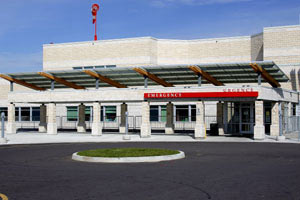
With funding made possible from the Ministry of Health and Long Term Care, TBRHSC and Superior North EMS worked together to create an Offload Delay Registered Nurse (OLDN) position in the ED to flow EMS patients during times of particularly high volume.The Offload Delay Nurse is dedicated to facilitating the transfer of patients to the Emergency team, making Paramedics more available to respond to other emergency calls in the community, thereby improving EMS service, reducing delays in emergency care and improving access to care.
Also as of April 2013, a revised comprehensive model to address offload delay times was created that included: redefining nurse patient assignments that would include moving one EMS offload patient directly into B-area, as well as a change to the OLDN shift to 10:00 am to 10:00 pm to optimize patient flow of EMS patients.
With the creation of a Rapid Assessment Zone in the ED, additional stretcher spaces were subsequently converted to chairs, thus freeing up more stretcher capacity for EMS patients. The impact of this new model has resulted in a dramatic decrease in EMS offload delay times.
Also funding from the Ministry of Health and Long-Term Care announced in March 2014 includes $780,000 to support ED physician recruitment efforts.
“I would like to thank the Ministry of Health and Long-Term Care, as well as donors to the Thunder Bay Regional Health Sciences Foundation,” said Robichaud. “Many of the improvements to patient care we enact are made possible through generous ministry funding, as well as support from donors in Northwestern Ontario.”






